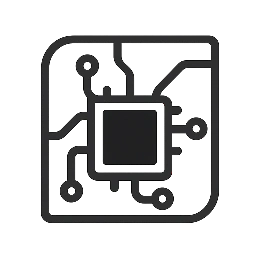In today’s fast-paced digital world, more companies are embracing hybrid cloud environments—a mix of on-premises infrastructure and public cloud services. But while hybrid clouds offer flexibility and scalability, they also come with their own unique security challenges. So, how do you keep your data and applications safe when they’re spread across multiple platforms? Let’s break it down.
Understanding Hybrid Cloud Environments
What is a Hybrid Cloud?
Imagine combining the best of both worlds: your own private servers coupled with public cloud services like AWS, Microsoft Azure, or Google Cloud. That’s a hybrid cloud. It’s like having a home office and a coworking space—you get flexibility and scalability without fully giving up control.
Why Organizations Choose Hybrid Cloud
Organizations opt for hybrid clouds because they want control over sensitive data while still benefiting from the cost-effectiveness and flexibility of public clouds. Hybrid setups also help businesses transition gradually to the cloud without disrupting existing systems.
Key Security Challenges in Hybrid Cloud Setups
Data Movement and Visibility
One of the biggest headaches? Data moving between environments. When data travels between your private and public clouds, it can get exposed if not properly protected. Maintaining visibility across platforms is critical to spot any suspicious activity.
Managing Multiple Security Policies
Every environment has different security rules. Juggling policies between your on-premises data center and various cloud providers can cause gaps — and hackers love gaps.
Building a Robust Security Strategy for Hybrid Clouds
Assessing Your Current Security Posture
First things first: audit what you have. Understand where your data lives, how it’s accessed, and what security controls are currently in place. This baseline helps identify weak spots.
Defining Clear Security Policies
Create unified security policies that span your hybrid environment. Think of it as setting the rules of the road that everyone must follow — from your internal IT team to cloud vendors.
Identity and Access Management (IAM) in Hybrid Clouds
Implementing Strong Authentication Mechanisms
Passwords alone won’t cut it. Use multi-factor authentication (MFA) and consider biometric verification or hardware tokens to ensure only the right people get access.
Role-Based Access Control (RBAC) Best Practices
Not everyone needs the same access. RBAC lets you grant permissions based on job roles, minimizing the risk if someone’s credentials get compromised.
Network Security in Hybrid Cloud Environments
Securing Communication Channels
Encrypt communication channels using SSL/TLS to keep data safe as it travels between your environments. Think of it as putting your data in a secure tunnel.
Using Virtual Private Networks (VPN) and Zero Trust
VPNs create a secure connection over the internet, while Zero Trust assumes no device or user is trustworthy by default. Combine both for layered security that verifies every access attempt.
Data Protection and Encryption Techniques
Encrypting Data at Rest and in Transit
Whether data is sitting idle or moving across networks, encrypt it. This way, even if attackers intercept it, they can’t read it without the decryption key.
Managing Encryption Keys Safely
Encryption is only as good as your key management. Use dedicated hardware security modules (HSMs) or cloud key management services to keep your keys locked down tight.
Continuous Monitoring and Threat Detection
Using Security Information and Event Management (SIEM) Tools
SIEM tools collect and analyze logs from all parts of your hybrid environment to detect anomalies early. It’s like having a 24/7 security guard watching every corner.
Leveraging AI and Machine Learning for Threat Detection
Modern AI-powered tools spot threats faster and with fewer false alarms. They learn your network’s normal behavior and flag anything out of the ordinary.
Patch Management and Vulnerability Assessment
Regular Patch Updates Across Environments
Outdated software is an open door for hackers. Ensure consistent patching across your entire hybrid setup to seal vulnerabilities promptly.
Conducting Vulnerability Scans and Penetration Tests
Schedule regular scans and ethical hacking exercises to uncover hidden weaknesses before attackers do.
Compliance and Regulatory Considerations
Understanding Relevant Regulations (GDPR, HIPAA, etc.)
Depending on your industry, you may need to comply with data privacy laws like GDPR or healthcare rules like HIPAA. Make sure your hybrid setup meets these requirements.
Maintaining Audit Trails and Reports
Keep detailed logs of who accessed what and when. This transparency helps during audits and can also aid forensic investigations if breaches occur.
Disaster Recovery and Incident Response Planning
Building a Resilient Backup Strategy
Don’t wait for a disaster to strike. Regularly back up data in multiple locations and test recovery procedures to ensure business continuity.
Preparing for Incident Response in Hybrid Clouds
Have a clear plan for what to do when things go wrong—who to contact, how to isolate threats, and how to recover quickly.
Vendor and Third-Party Risk Management
Evaluating Cloud Service Providers’ Security
Not all cloud providers are created equal. Check their certifications (like ISO 27001) and security practices before trusting them with your data.
Managing Third-Party Integrations Safely
Third-party apps or APIs can introduce vulnerabilities. Vet these tools thoroughly and monitor their activity closely.
Automation and Orchestration in Hybrid Cloud Security
Automating Security Policy Enforcement
Use automation to apply consistent security settings everywhere. This reduces human error and speeds up response times.
Using Orchestration Tools to Reduce Human Error
Orchestration platforms help coordinate security actions across environments automatically, making sure no step is missed.
Employee Training and Security Awareness
Educating Staff on Hybrid Cloud Risks
Your people are your first line of defense. Regularly train employees on phishing scams, social engineering, and cloud-specific risks.
Best Practices for Secure Remote Work
With hybrid setups, remote access is common. Teach staff to use secure Wi-Fi, VPNs, and strong passwords to keep their endpoints safe.
Future Trends in Hybrid Cloud Security
The Rise of Zero Trust Architecture
Zero Trust is moving from buzzword to reality, emphasizing “never trust, always verify.” Expect more tools adopting this mindset.
Increasing Role of AI and Automation
AI will continue evolving to not only detect threats but also predict and prevent attacks before they happen.
Conclusion
Securing a hybrid cloud environment might feel like juggling flaming torches—complex and high-stakes. But by understanding your setup, implementing strong identity controls, encrypting data, continuously monitoring, and training your team, you build a fortress that’s resilient and adaptable. Remember, hybrid cloud security is an ongoing journey, not a one-time fix. Stay proactive, stay vigilant.
FAQs
Q1: Is hybrid cloud more secure than pure public cloud?
Hybrid clouds offer more control over sensitive data, but security depends on how well you manage the environment. Proper controls are key.
Q2: What is Zero Trust and why is it important in hybrid clouds?
Zero Trust means no implicit trust for any user or device, verifying every access attempt. It’s crucial for complex hybrid setups to reduce risks.
Q3: How often should I update security patches in my hybrid environment?
Patch updates should be applied as soon as they’re available, ideally within days to minimize exposure to vulnerabilities.
Q4: Can AI really help in detecting hybrid cloud security threats?
Absolutely. AI can analyze huge volumes of data in real-time to spot unusual patterns faster than manual monitoring.
Q5: What should I look for when choosing a cloud provider for hybrid setups?
Look for strong security certifications, transparency in policies, and tools that integrate well with your existing security framework.

